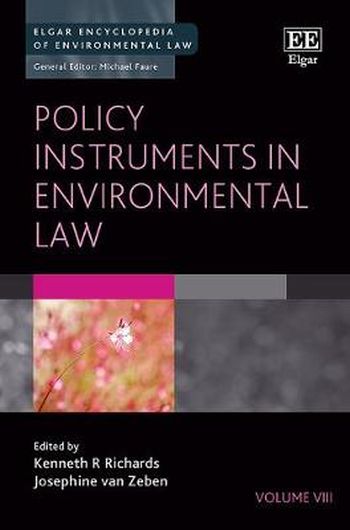
Governments have at their disposal a broad range of policy instruments that they may use to influence behaviour and pursue environmental policy goals. This volume of the Elgar Encyclopedia of Environmental Law is a comprehensive guide to these environmental policy instruments, examining their characteristics, applications, strengths and limitations, as well as giving an overview of the most significant issues related to their adoption and effectiveness.
With entries written by leading international scholars, this incisive volume provides insight into the cross-cutting issues that are common to discussions of such policy instruments, including the legal bases for their use, how instruments can be compared for costs, distributional questions, and monitoring and enforcement. Contributions also explore hybrids and blends of policy instruments and explain the relationships between them, using case studies and examples from around the world, as well as providing succinct summaries of the substantial literature in the field.
Students and scholars in environmental law will find this volume to be an invaluable resource, for both its solid theoretical foundations and its analysis of undertreated issues in the field. Its discussion of how and why each policy tool might be used is particularly relevant for policymakers and practitioners.